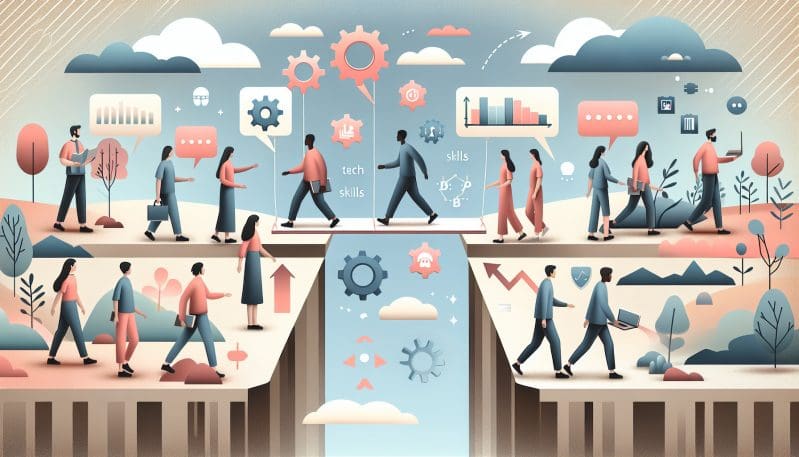Bridging the Upskilling Divide: How Can Businesses Ensure Inclusive Learning in a Post-Pandemic World?
- Home
- Bridging the Upskilling Divide: How Can Businesses Ensure Inclusive Learning in a Post-Pandemic World?

- Deeksha Joshi
- March 19, 2024
- 0 Comments
As the world cautiously steps into the post-pandemic era, the landscape of work has been irrevocably altered. The fast pace of technological innovation, the rise of remote work, and changing industry standards have created a demand for new skills and competencies. Amidst this transition, it is imperative for businesses to champion upskilling initiatives that are inclusive and accessible to all employees. The responsibility is twofold: to close the skills gap and to ensure no worker is left behind in the new economy.
The pandemic has highlighted disparities in the workforce, magnifying the obstacles that underrepresented groups face in accessing career advancement opportunities. To bridge this divide, companies must firstly recognize the changing contours of their industries and identify the specific skills that will be essential moving forward. This is not just about staying ahead of the curve; it’s about reshaping the curve to include everyone.
A proactive approach involves mapping out a company-wide skills matrix and cross-referencing it with employee competencies. This allows businesses to pinpoint areas that require intervention and craft personalized upskilling programs. However, one of the greatest challenges lies in creating programs that resonate with diverse learning styles and life circumstances. It’s not simply about availability; it’s about accessibility and relevance.
Collaboration is key to an inclusive upskilling initiative. Partnerships with educational institutions, non-profit organizations, and government bodies can provide a wealth of resources and insights. By combining forces, companies can tap into a broader range of training methodologies, from online courses and workshops to apprenticeships and mentorships, thereby accommodating different learning preferences and schedules.
Yet, despite the best-laid plans, barriers such as digital literacy, financial constraints, and language barriers can stymie access to upskilling programs. To dismantle these obstacles, companies must invest in supportive services, such as translation tools, financial aid for learning, and one-on-one coaching.
The ripple effects of upskilling are profound. For employees, the acquisition of new skills can lead to greater job satisfaction, increased earning potential, and a stronger sense of job security. For businesses, the benefits manifest in a more dynamic, innovative, and resilient workforce. A culture of continuous learning fosters an environment where employees feel valued and invested in the company’s future.
In conclusion, businesses have a vested interest in nurturing an ecosystem of lifelong learning. To truly leave no worker behind, it is essential to commit to the development of inclusive upskilling programs that cater to the needs of every employee. Companies should:
1. Conduct a thorough skills analysis to identify current and future needs.
2. Foster partnerships with various stakeholders to diversify learning opportunities.
3. Address and remove barriers to participation in upskilling programs.
4. Tailor programs to account for individual learning styles and circumstances.
5. Continuously measure and refine strategies to ensure they meet employee needs.
The time is now for businesses to lead by example and lay the foundations for a future where every worker has the opportunity to grow and succeed in the evolving world of work.
